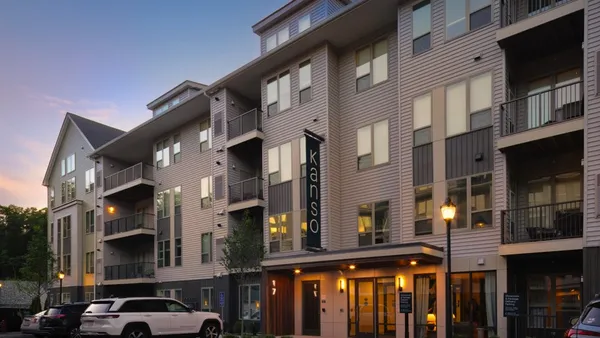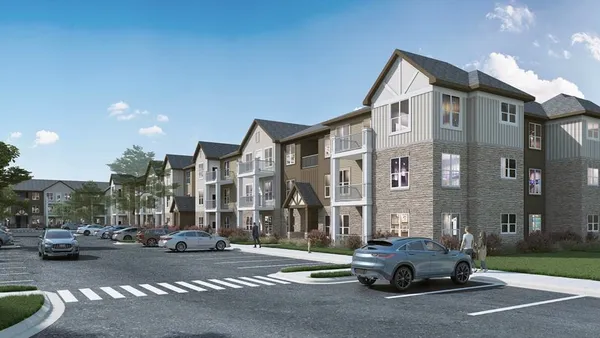Dive Brief:
- While the majority of U.S. renters live in high-density apartments, more than half of them would actually prefer to live in a single-family rental home, according to a new survey, which also found that security features have become a top priority among renters.
- Fifty-one percent of those surveyed said their ideal rental unit type is a single-family home and an additional 21% said they prefer a townhouse or duplex, according to Bethesda, Maryland–based real estate consultant RCLCO’s 2023 National Renter Consumer Preferences Report, released in March.
- New kitchen appliances, walk-in closets and oversized kitchen pantries were the most popular unit features among the survey’s respondents, while the two most popular building amenities are security-related: a front desk attendant or gated community and a secure package receiving system.
Dive Insight:
The strong appeal of single-family rentals comes both from renters by choice looking for convenience and from would-be home buyers who have, for one reason or another, been shut out of the for-sale market, according to Kelly Mangold, principal with RCLCO.
“With the current affordability challenges in the market, including high mortgage rates and in some places a low level of resale inventory, build-to-rent homes have become a very compelling option for renters,” Mangold told Multifamily Dive. Developers have taken note — last year, 6.9% of the nation’s single-family starts were build-to-rent, a trend that Mangold expects to continue.
The survey included respondents from the largest 150 metropolitan statistical areas across 46 states, Mangold told Multifamily Dive. The report is drawn from a sample of 2,000 renter households across the country with an income of over $50,000, a monthly rent of $1,000 or more, and a stated intent to rent their next residence. These parameters were set in order to understand the preferences of more affluent renters who might consider new construction rental properties in the future.
Preferred lifestyles
The most popular amenities mark a slight shift in priorities from several years ago, when pools and fitness centers were among the most important community features. These and other leisure amenities remain popular, but security features have taken their former spots near the top of the list.
While residents have always strongly preferred these amenities, based on previous RCLCO survey data, their recent rise isn’t the result of any change in security-related issues. Rather, according to Mangold, it’s because online shopping has received a large boost in recent years, particularly during the COVID-19 pandemic.
“As people return to the office they may be more accustomed to online shopping but may no longer be home to receive packages,” Mangold said. “Additionally, while it is not a statistic we track, the increase in online shopping provides more opportunity for package theft, so it is possible that respondents may have experienced this more recently, which is why they rank this so highly today.”
Amenity preferences tended to differ widely by age group. Walkability to stores, restaurants and open areas were popular among all residents, but working-age residents prioritized a short commute to workplaces, public transit and quality schools. Retirees preferred proximity to friends and family, which ranked second to last for younger renters. Mangold also noted that renters with children ranked playgrounds among the most important amenities.
Of the respondents aged 55 and up, about 20% said they would prefer age-qualified communities, and another 35.5% wanted to be in communities with mostly mature renters. Larger units and suburban mixed-use locations were also among their preferences.
Over 80% of all renters, regardless of age or other factors, consider green features important. Over half would pay more for green features, but of that number three-fourths would only do so if the extra cost resulted in a more comfortable unit or energy savings.











